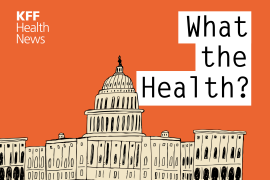Gauging Whether The Health Law’s Subsidies Have Succeeded
The New York Times assesses the track record. Meanwhile, The Wall Street Journal profiles Americans who prefer to go without health insurance and explores their rationales.
The New York Times:
Measuring The Success Of Health Insurance Subsidies
The Supreme Court will decide within days whether federal health insurance subsidies for people in more than 30 states are allowed by law. A broader question is, To what extent are the subsidies responsible for the expansion of health care coverage to millions of Americans under the Affordable Care Act? In short, Have the subsidies succeeded? By many measures, the answer is yes. More than seven million people are enrolled in the federal health insurance marketplaces, and a majority of them — 87 percent — receive subsidies in the form of tax credits to help pay their premiums, the government says. Without subsidies, many would be unable to buy insurance. The subsidies also appear to have drawn substantial numbers of younger, healthier Americans into the new insurance markets... (Pear and Sanger-Katz, 6/25)
The Wall Street Journal:
States Offer A Mixed Picture On Health-Insurance Costs
Some states are grappling with higher insurance costs for consumers while others are seeing record-low requests for premium increases in 2016 because of the Affordable Care Act, state insurance commissioners told Congress Wednesday. The health law has led to challenges and uncertainty in Tennessee, which is one of three dozen states using the federal health insurance exchange, Julie Mix McPeak, commissioner of the state’s Department of Commerce and Insurance, testified at a House Ways and Means oversight subcommittee hearing. She said the ACA has resulted in less competition and higher costs. (Armour, 6/24)
The Wall Street Journal:
Meet The Health-Law Holdouts: Americans Who Prefer To Go Uninsured
The Affordable Care Act has a perplexing problem: Many uninsured Americans prefer their old ways of getting health care. For millions, arranging treatment through cash, barter and charity is still better than paying for insurance. They include Lisa Khechoom of Glendale, Calif., who refuses to buy coverage. She says she pays a flat $35 for a doctor visit and often substitutes prescriptions with cheaper natural remedies for herself, her husband and their children. (Radnofsky, 6/24)
The Wall Street Journal:
5 Things About People Who Remain Uninsured Despite Obamacare
The landmark 2010 Affordable Care Act was passed on the premise that more than 50 million Americans didn’t have health insurance, and needed it. Five years in, it’s helped some, and passed over others–some of whom have chosen not to get insurance even thought the law makes it possible for them to do so... (Radnofsky, 6/24)






